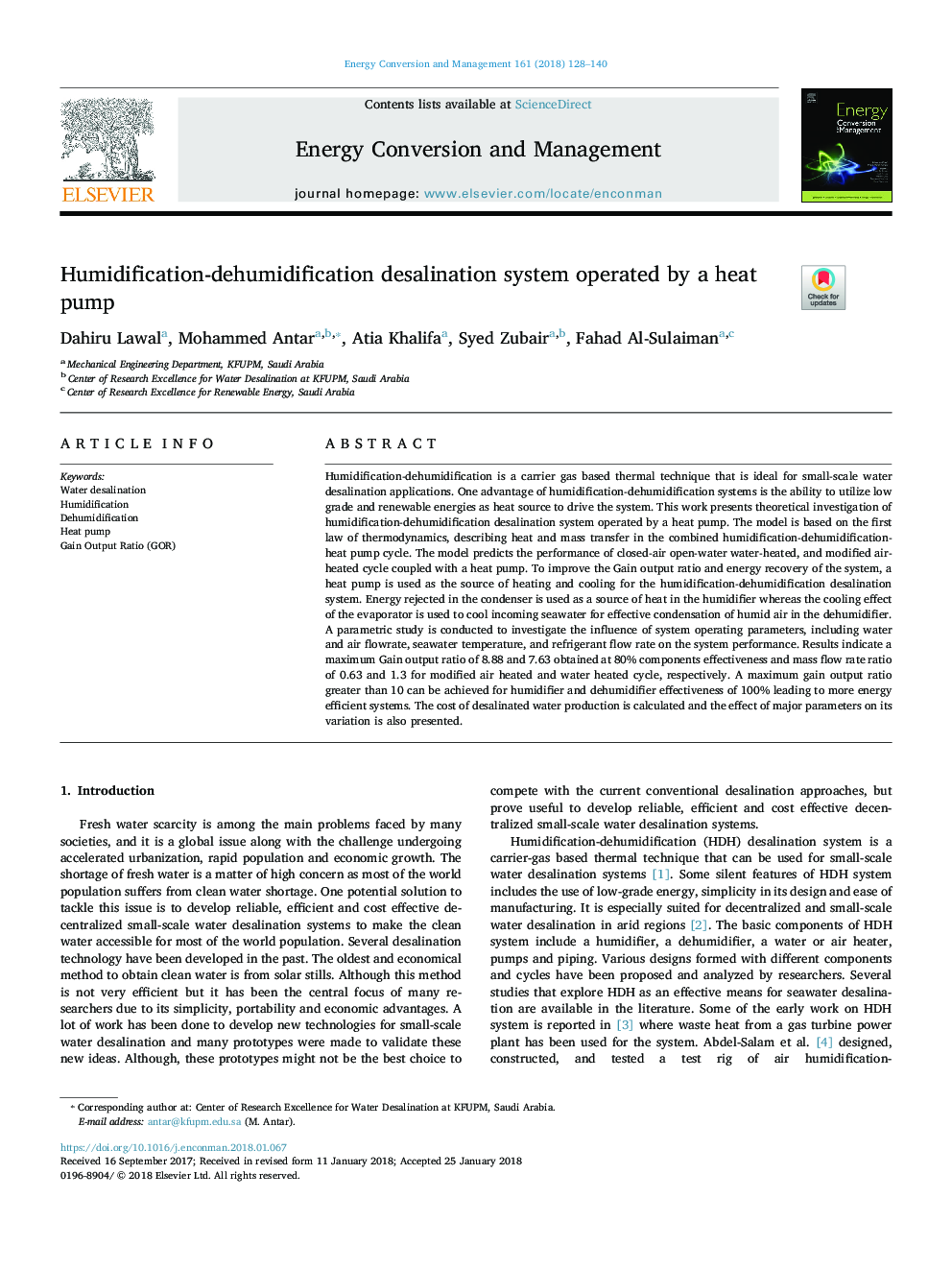| Article ID | Journal | Published Year | Pages | File Type |
|---|---|---|---|---|
| 7158921 | Energy Conversion and Management | 2018 | 13 Pages |
Abstract
Humidification-dehumidification is a carrier gas based thermal technique that is ideal for small-scale water desalination applications. One advantage of humidification-dehumidification systems is the ability to utilize low grade and renewable energies as heat source to drive the system. This work presents theoretical investigation of humidification-dehumidification desalination system operated by a heat pump. The model is based on the first law of thermodynamics, describing heat and mass transfer in the combined humidification-dehumidification-heat pump cycle. The model predicts the performance of closed-air open-water water-heated, and modified air-heated cycle coupled with a heat pump. To improve the Gain output ratio and energy recovery of the system, a heat pump is used as the source of heating and cooling for the humidification-dehumidification desalination system. Energy rejected in the condenser is used as a source of heat in the humidifier whereas the cooling effect of the evaporator is used to cool incoming seawater for effective condensation of humid air in the dehumidifier. A parametric study is conducted to investigate the influence of system operating parameters, including water and air flowrate, seawater temperature, and refrigerant flow rate on the system performance. Results indicate a maximum Gain output ratio of 8.88 and 7.63 obtained at 80% components effectiveness and mass flow rate ratio of 0.63 and 1.3 for modified air heated and water heated cycle, respectively. A maximum gain output ratio greater than 10 can be achieved for humidifier and dehumidifier effectiveness of 100% leading to more energy efficient systems. The cost of desalinated water production is calculated and the effect of major parameters on its variation is also presented.
Related Topics
Physical Sciences and Engineering
Energy
Energy (General)
Authors
Dahiru Lawal, Mohammed Antar, Atia Khalifa, Syed Zubair, Fahad Al-Sulaiman,
